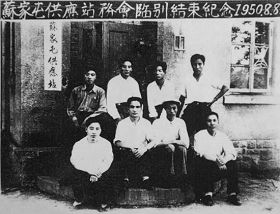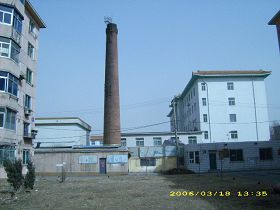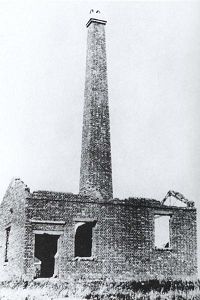(Clearwisdom.net) In early March 2006, a witness first revealed information about the Sujiatun concentration camp, where Falun Gong practitioners were detained for the purpose of having their organs harvested. The Chinese Communist Party's (CCP) horrific crimes of harvesting organs from living Falun Gong practitioners were thus first brought to light. The international community learned that a systematic procedure had been established to carry out organ transplantation surgeries using Falun Gong practitioners as the unwilling organ donors. The procedure consisted of sending practitioners to the underground concentration camp, tissue matching, removal of organs, cremation of the bodies, and the immediate transfer of organs to the hospitals where the organs were transplanted. It was soon after learned that similar concentration camps are spread all over China, and that the camp in Sujiatun, in China's Shenyang City, Liaoning Province, is only a small part of the organ harvesting network operated by the communist regime.
When the news first came out, the communist regime kept silent for three weeks before it invited US state council officials to visit the Liaoning Thrombus Treatment Center for Integrated Chinese & Western Medicine in Sujiatun. The US officials did not find any evidence of organ harvesting at the site, but official US spokesman Sean McCormack said that the United States took Falun Gong accusations very seriously and urged the Chinese government to investigate. Immediately, the communist regime published an article in their media claiming that, "Falun Gong allegations of a 'Sujiatun concentration camp are fictitious." In the article, Yang Hongfeng, the head of Sujiatun District, was quoted as saying, "Our 'tun' [village], the largest in the world, cannot possibly conceal such a bloody secret."
Then, does Sujiatun, the largest "tun" (village) in the world, have a concentration camp? What are the secrets that are concealed in Sujiatun?
The Largest "Tun" Is an Important Military Base
Sujiatun has a population of 430,000 people; it has as many as 16 military units, and it is known as "No. 1 Tun in China." The military units stationed in Sujiatun include the Shenyang Armed Police Command College of China's Armed Police, the Confidential Technology Division of Shenyang Military Region, the Anti-chemical Warfare Technical Division, the Electronic Confrontation Regiment, the Automobile Technicians Training Division of the Shenyang Military Region, the District Armed Police Team, the 598 Warehouse, the 598 Army, the Warehouse of the Liaoning Province Armed Police, the Armed Police Automobile Training Team and the 65149 Army.
Sujiatun is the southern gate of Shenyang, and it is a hub of rail, road, and air transport, as well as a hub of communications. To the north, there is Taoxian International Airport. To the west, is the Shen-Dan highway. Sujiatun Railway station, now called Sujiatun South Station, is nearly 100 years old, and it is the largest station of the railway network in Northeast China. It was once a key station in the railway system in southern Manchuria under Japanese rule. When the Japanese Kwantung Army launched the "9.18 incident," its southern Manchuria Railway Garrison was secretly transferred from Dalian to Sujiatun Station and Shenyang Railway Station. [The "9.18 incident" refers to September 18, 1931, when a section of the South Manchuria Railway was dynamited; this was a precursor to the Japanese invasion of Manchuria.] In late August of that year (1931), the Kwantung Army transported over 30 aircraft and over 20 artilleries from Japan to prepare for the attack on Shenyang, and all of these units were deployed near the Sujiatun and Huhe railway stations.
The communist regime's article stated, "Our 'tun,' the largest in the world, cannot possibly conceal such a bloody secret." However, it was this area, Sujiatun, that previously concealed the largest weaponry warehouse of the Kwantung Army. If the communist regime had not revealed this, nobody would have known about this secret warehouse.
Former commander Ceng Kelin of the Eighth Route Army 16th Military Sub-region recalled that the Soviet Army in Shenyang handed to them the largest weaponry warehouse of the Japanese Kwantung Army - the "Sujiatun Warehouse." When they opened the warehouse, they found that the weapons in the warehouse were enough to equip tens of thousands of soldiers. They "transported for three days and nights and hauled over 20,000 rifles, over 1,000 machine guns, plus 150 mortars, field artilleries, and mountain artilleries of various calibers." This warehouse is today called the 598 Warehouse.
The 598 Army in charge of the 598 Warehouse is stationed at Sujiatun Railway Station (now called Shenyang South Station). The 598 Warehouse is guarded by a special army. According to the Sujiatun Party website in 2005, a group of underground fortifications built by the Japanese during the Japanese invasion period were discovered for the first time, and the underground fortifications were located near the Shenyang South Station in Sujiatun. The entrance of the fortifications is a bunker made of concrete. The whole group of fortifications is divided into two parts, one part above ground, and the other part underground. The above ground part mainly consists of blockhouses and bunkers, numbering five in total. The underground component is mainly a tunnel built with reinforced concrete about 8 meters (approximately 26.25 feet) below ground. Measured from the surface level, this tunnel is about 2 kilometers (approximately 1.25 miles) long, but half of it has become inaccessible as it is filled with water. According to the former stationmaster of Sujiatun Station, no one of the older generation knows when the fortifications were built, but the Changda railway right next to it was built around 1905, during the Japan-Russia War. So accordingly, the underground fortifications might have been built around 1920. This group of fortifications was part of the weaponry warehouse of the Kwantung Army. With the warehouse next to the railway, it made transport an easy task, and the fortifications were the key forts to facilitate protecting the weaponry warehouse.
The CCP article quoted associate professor Yang Tao from China's Criminal Police Academy, "For every 100 people detained, it requires 15% police force, 3% medical staff, and one chief for every 50 people detained. If we calculate according to Falun Gong's allegation that 6,000 people were detained there, then it would have required more than1,000 staff members. Also, it would have been impossible to handle the problem of material provision for thousands of people, including the detainees, in 'secrecy.' Sujiatun is a place with a large population density; it is beyond belief that such a large-scale 'secret concentration camp' could exist without being noticed by the outside world."
The underground fortification built by the Japanese Kwantung Army is about two kilometers in length. And according to the former stationmaster of Sujiatun Station, no one of the older generation knows when the fortifications were built. In addition, there is even an army of the same name to guard the warehouse, and located nearby there are the military units such as the Confidential Technology Division of the Shenyang Military Region, the Anti-chemical Warfare Technical Division, and the Electronic Confrontation Regiment.
Sujiatun Was Once a Supply Station for More Than a Million Military Forces
In 1950, the communist regime secretly sent troops into North Korea, and under the then Northeast Government, Sujiatun Military Supply Station was established on June 26, 1950. On October 19, the first batch of military forces secretly entered North Korea, which included 4 corp and 3 artillery divisions. Sujiatun became a key link for the logistical supplies to the armies traveling to North Korea. According to information provided by Sujiatun Military Supply Station: "At that time, the station was able to provide ongoing catering for 1,200 people each day and night, and it was able to provide boiling water for 2,000 people. In 1951, Sujiatun received 1.2964 million people, and provided food for 722,600 of them. In addition, it provided 116,100 poles (one pole is approximately two buckets) of boiling water, 104,900 jin (one jin is about one pound) of straw for horse feed, and 22,000 jin of forage." A local man Guo Wencai recalled, "A train would arrive every half-hour, which carried at least a regiment (at least 1,400 or 1,500 soldiers). Before they could finish eating, another train would have arrived." Everyone who was assigned to work at the military supply station had to go through strict political checks, and the whole station was run in a military manner. Even those who worked there were not allowed to move about freely. There was a platoon of soldiers specially assigned to guard the station, and whenever there was any important army passing through, the head of the Shenyang Police Department would come in person to oversee the security work." The reason Sujiatun was chosen as a supply station for nearly 1.3 million military personnel was because it was the largest transfer station in Northeast China, and there was the 598 Warehouse left behind by the Japanese Kwantung Army.
The so-called "evidence" [negating the existence of a concentration camp] in the regime's article about Sujiatun stated, "If so many people were detained there, it would need trucks to send food and drink." It was indeed so, because the detention center is right in the military warehouse. The consumption of materials was organized according to military procedures. Sujiatun was once able to provide catering for 700,000 people in 1950 (Photo 1), let alone provide food for a few thousand Falun Gong practitioners half a century later. How much manpower was needed for Sujiatun Military Supply Station in 1950? There were eight regular staff members (Photo 2), plus 800 railway station staff and their family members who passed the political checks. According to this ratio, it would only need a few dozen people to provide food for the few thousand Falun Gong practitioners, unless their work efficiency has become worse than than it was 50 years ago. The so-called "15% police force" is irrelevant, because those in charge of the detention center are actually personnel in active service, and there is no need for police at all.
Photo 1: A transportation scene at Sujiatun during the Korean War
Photo 2: Eight regular staff members of the Sujiatun Military Supply Station in 1950
Unnoticed Details
The article published by the Communist regime regarding Sujiatun stated, "According to Zhang Yuqin (Vice president of the Liaoning Thrombus Treatment Center of Integrated Chinese & Western Medicine), the hospital has little more than 300 beds, and could not fit anywhere near 6,000 people. Furthermore, unlike what was spread by the rumors, there is no facility such as the 'underground basement' or 'incinerator,' let alone the right circumstances or qualifications to carry out organ transplantation. Stoker Zhao Haiyun said with anger, 'We burn coal here every day, how could it be an incinerator!'" This article also made reference to, "An old lady who strolled past the building said, 'I can see the boiler from my home, anyone would know that it is a boiler belonging to the hospital, and it's impossible for it to be used for burning bodies.'" Anonymous viewpoints such as these have been used as their arguments to deny the allegations.
Public bath houses in many parts of China have boilers large enough to burn bodies, due to the capacity required. In addition, a thoroughly cremated body gives off little odor. Meanwhile with the tall structures of the chimney, ashes do not fall easily to the ground below, thus there is very little chance for anyone to notice. The scale of the boiler room of the Thrombus Treatment Center exceeds that of the incinerator at Japan's 731 Army base (Photos 3, 4). Also, due to the cold climate in Northeast China, demand for hot water and heating facilities is very high. For these reasons, boilers are run at most large-scale residential complexes as well as business buildings. For bodies to be cremated in boiler facilities of this scale would be an easy task and would not arouse people's suspicion.
Photo 3: The boiler at Liaoning Thrombus Treatment Center of Integrated Chinese & Western Medicine
Photo 4: The crematorium at Japan's 731 Army Base
Later on, the communist regime further stated that the Thrombus Treatment Center was classified as "first class in Grade 2," implying that, in terms of treatment techniques, available facilities, as well as the limited rights of the doctors, the hospital did not have the ability to carry out human organ transplantation. Yet according to the mainland Chinese newspaper First Financial Daily, before the Ministry of Health issued the "Interim Provisions on Management of Clinical Application of Human Organ Transplantation Techniques" on March 27, 2006, there did not exist any legal binding documentation which regulated permission for hospitals to carry out organ transplantation. To take Guangdong Province as an example, in 2003 a total of 50 hospitals applied to the provincial medical association for qualification and facility assessments. Thirty-two of the hospitals passed the assessments, yet many of these were not in the "first class of Grade 3," and some were only deemed as Grade 2, privately run, or district hospitals. (In China, hospitals are classified into three grades, and each divided into three classes. "First class in Grade 3" had the highest qualifications in skill-level, as well as the best rated facilities.) Across the nation, a total of 368 hospitals are able to carry out kidney transplantation, and more than 200 can conduct liver transplantation. However in the US, the nation with the most advanced transplant surgery technologies, only 100 hospitals hold qualifications for liver transplantation and only 200 are permitted to carry out kidney transplants.
Mao Xiaoling, chair of the division for qualification assessments of Guangdong Medical Association, told the reporter, "These are only hospitals on file at the Ministry of Health, but the fact is, as far as I know, there are at least a dozen hospitals in Guangdong Province that are carrying out organ transplantation without having applied for assessments, and most of these are public hospitals. Some hospitals which did not pass the assessment are also doing this." Therefore, to say that the Thrombus Treatment Center was "first class in Grade 2," and thus was unable to carry out organ transplantation, is a pure lie.
At the moment, at least two kilometers of the underground fortification that connects with the munitions warehouse of the Japanese Kwantung Army has been made known to the public. The Thrombus Treatment Center located at 49 Xuesong Road is approximately 1.6 kilometers of straight-line distance from the entrance of the underground fortification at the Marshalling Station. Of course, 300 beds cannot contain 6,000 people, but the true answer lies within the underground warehouse, which the Japanese army and the Chinese communist regime have both used to persecute the Chinese people.
The concentration camp at Sujiatun is not the only one in existence. Similar camps are spread across China. As the communist regime destroys evidence and covers up their crimes with propaganda, many facts have not yet come to the surface. With regard to Sujiatun, evidence from history and evidence that has been presented since March 2006 are enough to confirm the bloody secrets hidden behind the communist regime's quibbles. Forthcoming evidence, as well as efforts already made from around the world, have already had a great impact in impeding the crimes of organ harvesting committed against Falun Gong practitioners in China, which still take place today. More facts have yet to come to light.
All content published on this website is copyrighted by Minghui.org. Minghui will produce compilations of its online content regularly and on special occasions.
Category: Organ Harvesting













